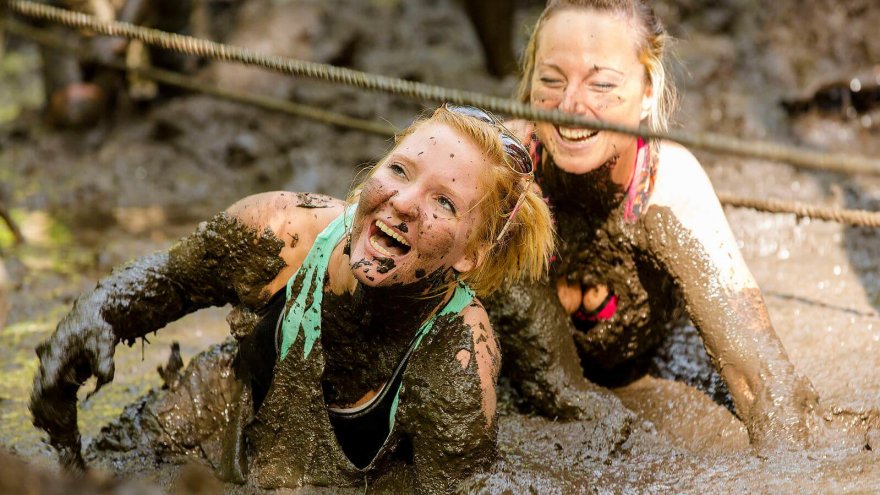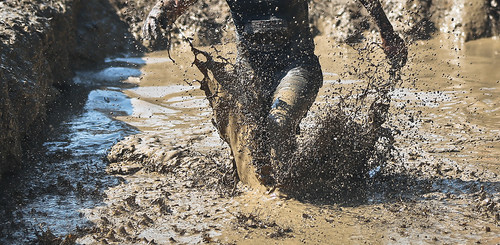Obstacle Course Racing: A Supplement to Regular Running

Obstacle course racing (OCR) is a craze that has swept the sporting scene since the turn of the century. There were 1 million obstacle course race registrants in 2011 and the growth of OCRs surged up to 4.5 million registrants in 2015. [1] This type of racing sets itself apart from all others and is not for the faint-at-heart. However, obstacle course racing is touted as being more group-oriented than traditional running and is therefore seens as more fitting for a wider array of participants. So do think you might be cut out for the fun of a military-like obstacle course that will unleash your inner child (or your inner G.I. Joe)? Let’s take a look at what it takes.

What Is It?
Obstacle course racing is a type of non-traditional sporting event that is chalk-full of ever-changing obstacles designed to challenge runners to a new degree of fitness extremes. The most popular circuits of obstacle course racing are the Tough Mudder, Spartan Race, and the Warrior Dash. You may have also heard of other circuits such as BattleFrog, Savage Race, and the Rugged Maniac — the latter backed by Dallas Mavericks owner Mark Cuban. [1]
The courses are designed to test endurance, strength, speed, and dexterity, among other athletic prowess. The most popular obstacles include mud pits, barbed wire crawls, monkey bars, balance beams, deep trenches, and wall climbs.

Why Do It?
There’s something about taking such an extreme break from the ordinary that can be truly freeing about obstacle courses. There’s an ethos of teamwork and spirit of cooperation that comes with these team-based competitions. These races have a wild and child-like air. Rugged Maniac, one of the shorter obstacle courses at just 3-miles long, even advertises that the race is just like “when you were a kid and you used to run around outside with your friends climbing trees, jumping in puddles, playing tag, and just plain having fun” [2]
The OCR subculture includes a rag-tag group of competitors. You’ll have elite athletes training for some of the world’s toughest obstacles in some courses [6] and novices just running alongside their friends in the typical fun run. Do your research and choose the right race for you…because not everyone is trying to surmount the world’s longest rope traverse, world’s longest monkey bars, world’s highest slide, or epic cliff jumps!
How to Train
So you’ve sign up…and you’re either pounding your chest like Donkey Kong with all the confidence of a jungle warrior or you’re wondering if you’ve just made a huge mistake! But no, really, you’ve got this. We’ve got you covered with some handy obstacle course training basics. And for obstacle-specific training, you’ll want to review and train for these top obstacles:

Monkey Bars
Just like those you climbed as a kid. You’re probably used to calloused runner’s feet by now, so this time you need to toughen up your hands for a bout on the bars. Develop both grip, forearm strength, and a good rhythm for your swing across the bars. If you don’t have a nearby playground with bars, try using a single bar and practice swinging yourself back and forth. The longer the monkey bar obstacle, the less likely you’ll be able to just “muscle through it.” Keep this in mind and try to focus on your swing and grip (as opposed to pure arm strength) as you train.
Rope Swing
Training for this activity will be similar to training for monkey bars. Focus on grip and forearm strength. You’re hands will be happier with a little callous on event day so be sure to do some training and prepare to blister a bit along the way.
Mud Slides
In obstacle races, you’ll cover all types of terrain. To prepare for a mudslide, line a backyard hill with a tarp, hose it down, and go for a slide. Don’t have your own backyard or any yard-sharing friends either? Bummer. Make a stop at a playground slide along your running route… Just be kind and wait your turn in line.
Source: Flikr.com
Mud Pits
Wear lightweight sneakers. Also consider wearing compression clothing or a unitard so mud can’t cake-down in your clothing, slowing you down during the event. To train, visit a small stream or creek to sample the mud. Find the muddiest shallows and ease in (just as you will on race day) instead of jumping in full-speed. If you have an extended crawl during your event, use crab-walk instead of crawling on your knees to save you from the pain of rocks on the bottom.
Sandbag Carry
This will take your strength training to new extremes. Find a steep hill and carry a heavy-weighted backpack up and back down during your usual run.

High Dives/Cliff Jumps
Get over your fear of heights and prepare for a plunge. Start small and work your way up. Avoid using goggles and, again, wear your unitard (or a wetsuit). Training for cliff jumps can be easy, if you have access to a swimming pool. If not, proceed with caution.
Finding Your Race
If you’ve got what it takes, check out the USA Mud Runs and Obstacle Races Guide to find the events near you. Gear up and train hard. It might be a bumpy ride.
References
[1] Perez, A. J. (2015, November).Obstacle Races Going Mainstream, More Popular Than Marathons. USA Today.
[2] Margaret Schlachter. (May 19, 2015). The 5 Most Epic Obstacles in Obstacle Racing. Outside Online.
[3] USA Mud Runs and Obstacle Races. (n.d.). Retrieved from http://www.mudrunguide.com/directory/usa/
RunnerClick References
Fun Run Events to Get Your Friends Interested in Running
How to Train for an Obstacle Course Race
7 of the Most Common Running Surfaces and How They Affect Us
Best Lightweight Running Shoes Reviewed
Strength Train Your Way to a PR
Latest Articles
 Is Running on a Treadmill Easier Than Running Outside?Runners have their own preferences, whether it is treadmill running, running outside on the road, or exploring trails. So...
Is Running on a Treadmill Easier Than Running Outside?Runners have their own preferences, whether it is treadmill running, running outside on the road, or exploring trails. So... Is It OK to Use Trail Running Shoes on the Road?While trail running shoes can be used on roads, especially in situations where a runner encounters mixed terrains or pref...
Is It OK to Use Trail Running Shoes on the Road?While trail running shoes can be used on roads, especially in situations where a runner encounters mixed terrains or pref... How to Fix Sore Quads After Running?Rest, ice, gentle stretching, and over-the-counter pain relievers can help soothe sore quads after running. Also, ensure ...
How to Fix Sore Quads After Running?Rest, ice, gentle stretching, and over-the-counter pain relievers can help soothe sore quads after running. Also, ensure ... 10 Fruits With The Most Electrolytes to Replace Sports DrinksThese fruits are high in electrolytes such as potassium, magnesium, and calcium, essential for hydration, muscle function...
10 Fruits With The Most Electrolytes to Replace Sports DrinksThese fruits are high in electrolytes such as potassium, magnesium, and calcium, essential for hydration, muscle function...


